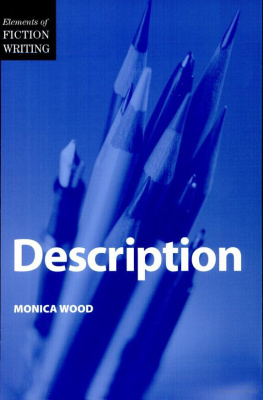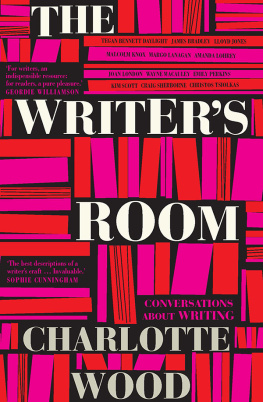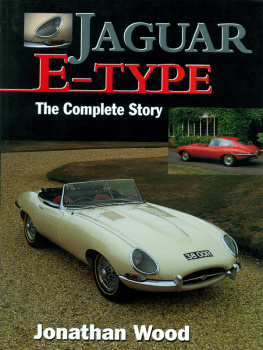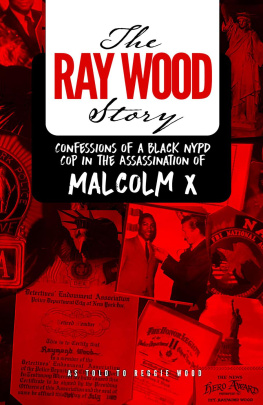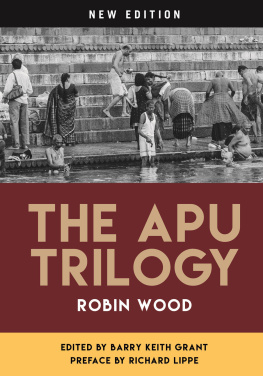Wood - Description
Here you can read online Wood - Description full text of the book (entire story) in english for free. Download pdf and epub, get meaning, cover and reviews about this ebook. City: Cincinnati, Ohio, year: 1995, publisher: Writers Digest Books;Writers Digest Books, genre: Art. Description of the work, (preface) as well as reviews are available. Best literature library LitArk.com created for fans of good reading and offers a wide selection of genres:
Romance novel
Science fiction
Adventure
Detective
Science
History
Home and family
Prose
Art
Politics
Computer
Non-fiction
Religion
Business
Children
Humor
Choose a favorite category and find really read worthwhile books. Enjoy immersion in the world of imagination, feel the emotions of the characters or learn something new for yourself, make an fascinating discovery.
Description: summary, description and annotation
We offer to read an annotation, description, summary or preface (depends on what the author of the book "Description" wrote himself). If you haven't found the necessary information about the book — write in the comments, we will try to find it.
Description — read online for free the complete book (whole text) full work
Below is the text of the book, divided by pages. System saving the place of the last page read, allows you to conveniently read the book "Description" online for free, without having to search again every time where you left off. Put a bookmark, and you can go to the page where you finished reading at any time.
Font size:
Interval:
Bookmark:
DESCRIPTION
BY
Scanned by ripXrip
Proofread and formatted by BW-SciFi
Ebook version 1.0
Release Date: November, 13 th , 2004
For Dan Abbot teacher, craftsman, friend.
ABOUT THE AUTHOR
Monica Wood is the author of a novel, Secret Language, which is currently under option as a television motion picture. Her frequently anthologized short stories have appeared in such publications as Red-book, The North American Review, Yankee, Tampa Review and Manoa. Her stories have been read on public radio, nominated for the National Magazine Award, and given special mention in the Pushcart Prize. A native of western Maine, she now lives in Portland, Maine, where she freelances as a writing instructor and copy editor.
Description. Copyright 1995 by Monica Wood. Printed and bound in the United States of America. All rights reserved. No part of this book may be reproduced in any form or by any electronic or mechanical means including information storage and retrieval systems without permission in writing from the publisher, except by a reviewer, who may quote brief passages in a review. Published by Writer's Digest Books, an imprint of F&W Publications, Inc., 1507 Dana Avenue, Cincinnati, Ohio 45207. 1-800-289-0963. First edition.
This hardcover edition of Description features a "self-jacket" that eliminates the need for a separate dust jacket. It provides sturdy protection for your book while it saves paper, trees and energy.
Other fine Writer's Digest Books are available from your local bookstore or direct from the publisher.
99 98 97 96 95 5 4 3 2 1
Library of Congress Cataloging-in-Publication Data
Wood, Monica
Description / by Monica Wood.
p. cm. (Elements of fiction writing)
Includes index.
ISBN 0-89879-681-4 (pbk. : alk. paper)
1. Fiction Technique. 2. Narration (Rhetoric) 3. Description ( Rhetoric)
I. Title. II. Series.
PN3383.N35W66 1995
808.3 dc20 95-19578
CIP
Edited by Jack Heffron
Designed by Angela Lennert
Description is not so much an element of fiction as its very essence; it is the creation of mental images that allow readers to fully experience a story. When you write a story, you offer an account of a chain of events, the characters that inhabit those events, and the places in which those events occur. How you describe those events, characters, and places affects your readers' perceptions.
Every technical decision you make during the writing of a new story from the length of your sentences to your choice of point of viewbecomes part of that story's description. The statement "John showed up with a gun" describes an event. "John arrived, pistol glinting in his hand" describes the same event with a little more pizazz. Your instinct for jazzing up a plain declarative sentence has repercussions, however, because the rewrite describes something beyond a simple action. For starters, the rewrite gives us a bit of atmosphere "glinting" suggests light and gives the gun an aura of menace. Second, it tells us something about the observer, who uses the more accurate word "pistol," and is aware of the "glinting." Third, it suggests something about John's state of mind: a man with a glinting pistol must surely be aching to pull the trigger, whereas a man who simply shows up with a gun could have any number of intentions. The mental images in the rewrite are profoundly different from those in the original sentence. Even the smallest decisions about description can affect a story in countless subtle ways.
When you write, you create a fictional world. You may describe that world in lyrical prose fashioned around a central metaphor; you may opt for a stark, straightforward telling that uses few adjectives; you may invent a first-person narrator who uses made-up words; you may render a story entirely in dialogue, evoking characters through the cadence of their voices. Good description takes many forms and does not depend solely on adjectives and adverbs for impact. A statement as simple as "the man wept" may be all the description you need for a particular scene. What makes one story more finished more "real" and alivethan another is not a matter of adjectives per sentence; it is the accuracy and relevance of whatever description you do use.
Describing a character as "a beautiful girl who made heads turn" is not especially accurate: she could be Chinese or African, six feet tall or four-foot-nine. Focussing on her "coppery hair" or "deeply flecked eyes" creates a more accurate mental image. If the fact of her beauty rather than a literal picture is what you want to convey, however, then a line of dialogue may make for the most accurate description: " 'Isn't she pretty?' Al said." Or you might write, in a one-line paragraph:
She was a beautiful girl.
The sentence, like the character, stands alone. The placement of that sentence accurately evokes the image of a character in a class by herself.
In addition to being accurate, description must be relevant to the story at hand. You need not describe the "old, scarred, rickety maple table in the foyer" when a simple "table in the foyer" will do. A string of adjectives like this words with similar meaning and impactdoesn't create much of a mental image and may even distract the readers from your fictional world. This is irrelevant description, description for its own sake. If the table is important, then describe it in a way that shows its relevance to the story. The same table described as "a sentry burdened by weeks of unopened mail" becomes an object with a purpose in the household. The description also suggests something about the people in the householdwhy do they let their mail go for weeks unopened? Remember, you are not merely writing; you are writing a story! It is up to you to guide your readers through the story's events and make sure they don't get lost in a thicket of words and images along the way.
TYPES OF DESCRIPTION
The suggestions and guidelines contained in this book are not designed to alter your natural writing style. Description comes in many forms. The oft-maligned minimalists many of them brilliant chroniclers of modern lifeuse spare, economical prose that, paradoxically, opens up a story. A few well-placed details (a half-smoked cigarette, a broken heel, a muddy sunset) can express the essence of a character or place. Other writers are more flamboyant, even rambunctious, with their descriptions: syntactical pyrotechnics spark from every page. Each of these extremes brings its own brand of delight to both writer and reader.
In A Soldier of the Great War, novelist Mark Helprin tells an epic tale of war in which descriptions of thunderstorms and moonrises take up pages at a time. Women's faces, the war's grisly battles, ice-laden cliffs, fields, houses, paintings all are rendered in close, precise, lyrical detail time and again, to the consternation of some readers and the delight of others. Why this much detail? Why not simply tell the story? Because, as the happy reader gradually discovers, A Soldier of the Great War is not a tale about war but a tale about beauty. The protagonist is a professor of aesthetics and war veteran at the end of his life, and the story's lyrical descriptions are true to his view of the world. Beauty, we discover, is an affliction, a refuge, an absolute truth. In the final scene, the old soldier/professor watches a flock of swallows being taken down by a hunter. No matter how many are felled, more rise up, banking and fluttering in an exquisite sky. Just as the novel's protagonist has fallen and risen time and again, unable not to hope, the swallows keep rising because they know how to do nothing else. It is a memorable scene, a harrowing view of beauty, a metaphor for the novel itself:
Alessandro turned again to the swallows. Though the sun backlighted them into hallucinatory streaks of silver, he neglected to shield his eyes, and he watched them fill the sky. As the hunter approached the base of the cloud, he made no effort to go quietly or to conceal himself.
Next pageFont size:
Interval:
Bookmark:
Similar books «Description»
Look at similar books to Description. We have selected literature similar in name and meaning in the hope of providing readers with more options to find new, interesting, not yet read works.
Discussion, reviews of the book Description and just readers' own opinions. Leave your comments, write what you think about the work, its meaning or the main characters. Specify what exactly you liked and what you didn't like, and why you think so.

